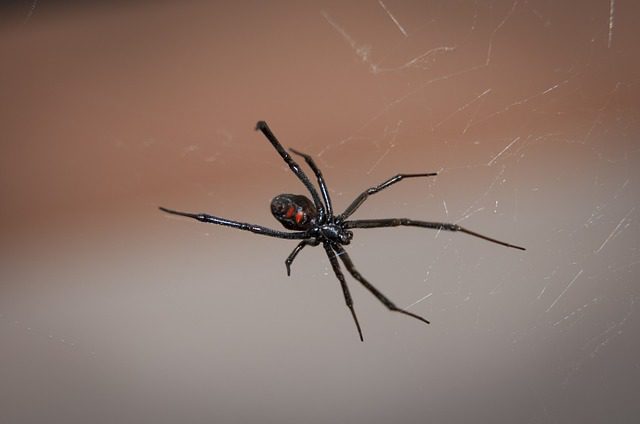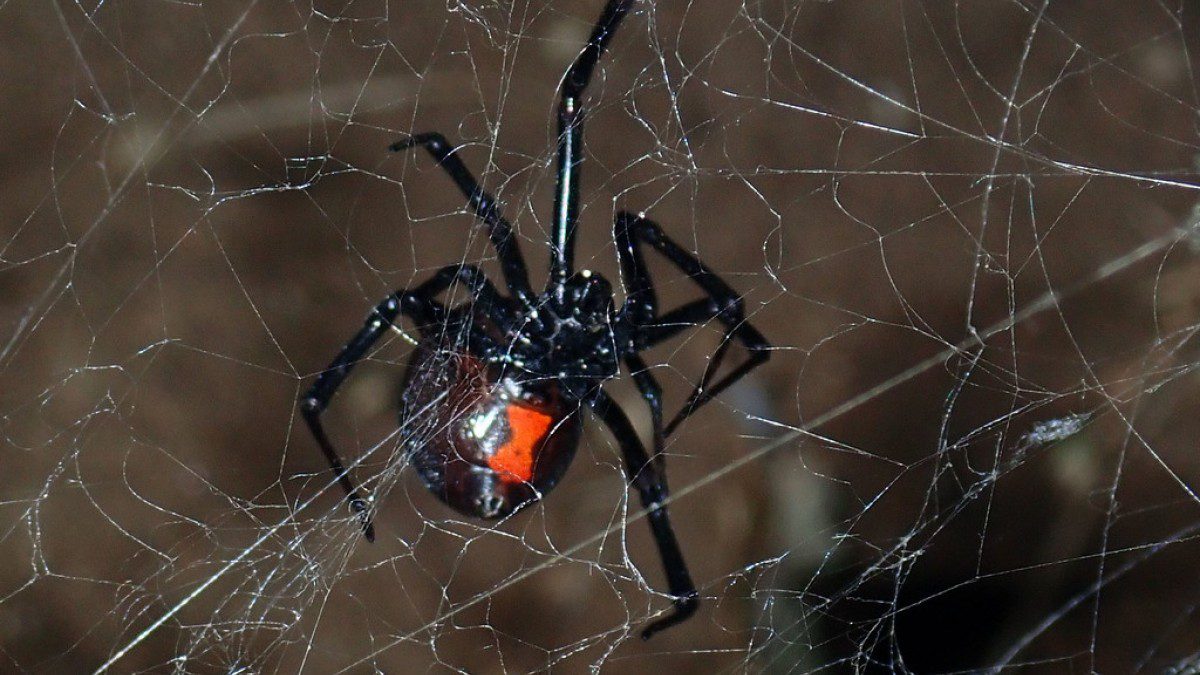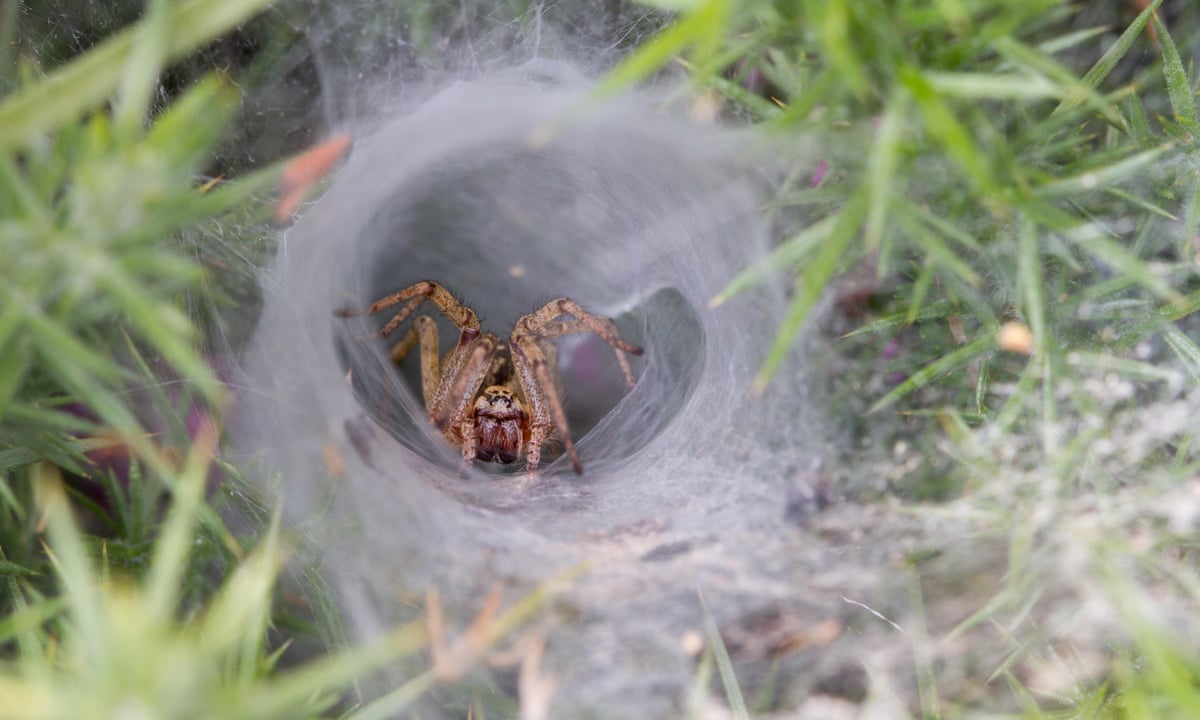Spiders
Home > Pest Library > Spiders

What are spiders?
Spiders are beneficial predators that help to control populations of garden insects and other nuisance pests. Spiders are arachnids, and unlike insects that have three body regions, only have two body regions: the cephalothorax (head) and abdomen (body). Additionally, all spiders have eight long legs. Although spiders are beneficial to the environment when living outdoors, some species of these intimidating arachnids pose a certain danger to people and pets. Some of the most common spiders we get calls for in Colorado homes are wolf spiders, black widows and funnel weaver spiders.

Wolf spiders vary in color from brown, orange, black and grey. Most are brown, with gray, black, and tan markings. They range in size up to 35mm. They are hairy and have eight eyes arranged in three distinct rows. As wolf spiders are nocturnal and search for prey at night, spotting an adult spider in the dark may indicate that the arachnid lives nearby. While nesting sites and preferences vary by species, wolf spiders regularly inhabit leaf litter, grassy areas, and small burrows or tunnels as they typically do not build webs. Their fondness for solitude means that people rarely have to worry about dealing with a large infestation of wolf spiders or even encountering more than one of these spiders at a time.
Black widow spiders are all black to brown in color and differ slightly in appearance based on gender. The female has a red hourglass-shaped marking on the underside of its globular abdomen, while the male black widows have yellow, red and white bands and spots over their backs, as do both sexes of black widows in their immature stages. Females may grow up to 13 mm long, while males are smaller and measure around 6 mm in length. The messy, irregular-shaped web of the black widow may be the first sign of an infestation. Typically found under furniture or in the corners of basements and storage areas, webs denote spider activity, whether current or past. Black widows prefer to live in dark, undisturbed locations, such as underneath rocks or in wood piles near and around old buildings.


The funnel weaver spider is commonly mistaken for a Brown Recluse spider (which are confined to southern states), but the funnel weavers do not have the violin marking on their back. They are typically brown, yellow or cream colored. They range in size up to 35mm. Funnel weaver spider webs are distinctive and constructed in tall grass, underneath boards and rocks, and around debris. Their webs are seen throughout grassy areas in summer to early fall and are noticeable in the early morning dew. These spiders prefer to build webs in darker areas, such as flower beds, woodpiles, and secluded corners inside structures. If found in the home, their webs are often in corners of dark rooms, such as the basement.
Are spiders dangerous?
Whether a spider is dangerous or not depends on its species. The black widow spider is considered to be a dangerous species of spider. They possess venom that is strong enough to cause health problems in people. Most species of spiders that we run into daily are nuisance pests and harmless to people. Typical household-invading spider in Colorado such as the wolf spider, do not have venom that is strong enough to harm a person.
Why do I have a spider problem?
Most spiders prefer living outside on properties that offer them safe, secluded, and sheltered areas to hide out in. Spiders are shy and reclusive by nature and prefer to stay out of the view of people and predators. While they mainly live outdoors, they will move inside of homes and outbuildings if the weather outside becomes too cold, hot, or wet. Spiders will also move indoors when tracking prey, and properties that have problems with insects will often have issues with spiders as well.
Where will I find spiders?
Spiders build their webs – or burrows, in the case of wolf spiders – in a variety of locations. Doorways, gardens, roof eaves, shrubs, tall grasses, and under decks are all places where you will find spiders. They can also be seen crawling on and hiding behind wooden shingles found on the exterior of homes as well as barns, garages, and other outbuildings. Spiders that have moved indoors usually choose dark, secluded areas to hide in such as basements, closets, crawlspaces, and under furniture.
How do I get rid of spiders?
The best way to eliminate spiders from your Colorado property is to partner with a local pest control expert. At Affordable Pest Control, we are committed to providing each of our customers with superior pest control services to meet their individual needs. Our experienced and knowledgeable technicians always perform the most advanced, effective services. To learn more about working together to rid your home or business of spiders and other household pests, contact Affordable Pest Control today!
How can I prevent spiders in the future?
The following tips can help you to protect your Colorado home or business from becoming overrun with spiders:
- Seal any openings in the foundation, exterior walls, and roofline of your home or business.
- Remove any clutter and debris that spiders can hide and build webs in from your yard.
- Place gardens and woodpiles a distance away from the exterior of your property.
- Cut tree branches, bushes, and shrubs away from the exterior of your home or business.
- Make sure downspouts and gutters are free of debris and store containers that collect water upside-down.
Request Your Free Inspection
Complete the form below to schedule your no obligation inspection.
